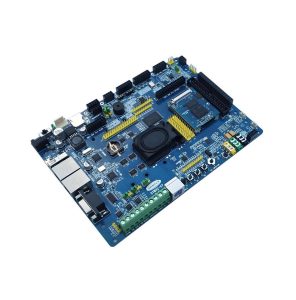The global markets for printed circuit boards (PCBs) was valued at $67.9 billion in 2023. It is projected to grow from $70.9 billion in 2024 to $92.4 billion by the end of 2029, at a compound annual growth rate (CAGR) of 5.4% from 2024 through 2029.
PCB assembly is mounting blank PCB boards with electronic components to make them into semi-finished devices. This process includes PCBA manufacturing and PCBA tests. In PCBONLINE, PCBA tests go through the whole process to ensure 100% product quality and customer satisfaction.
Roughly, the PCBA process can be divided into these phases: soldering paste printing > SMT (surface mounted technology) > reflow soldering > AOI (automated optical inspection)> THT (through-hole technology) > wave soldering > touch-up and cleaning > IC programming > FCT (functional tests) > aging testing.
In addition, for bulky PCBA manufacturing, we usually have an FAI (first article inspection) for the PCBA prototypes and send the FAI report for the client to review and approve before going to batch production.
Thriver Digital Tech is a professional China PCB and PCBA assembly manufacturer. We have been engaged in PCBA production for more than 10 years, with rich experience, We provide OEM/ODM PCBA, One stop service from PCB Design, PCB Copy, BOM Kitting,Components Sourcing, PCB Manufacturer, PCB Assembly, Function Testing,etc.
PCBA manufacturing applications:
R&D and electronic foundry manufacturing of consumer electronics products such as projectors, home appliances, Bluetooth headsets, etc.
PCBA box for computer and communication electronic products, such as servers, wireless routers, Wi-Fi modules.
Industrial and security electronics manufacturing, such as industrial control, HD cameras, face recognition cards, smart door locks, etc.
PCB assembly for high-end electronic applications in the automotive, military, aerospace and medical industries, e.g. lithium battery cell contact systems, etc.
The PCBA manufacturing process begins with the procurement of a bare PCB, which is then transformed into a fully functional electronic device through a meticulous PCBA assembly process. Our PCBA factory adheres to strict quality standards to ensure that every product meets our customers’ expectations.
Step 1: BOM Verification
Prior to initiating the PCBA assembly, our engineers conduct a thorough Bill of Materials (BOM) verification. This step ensures that all components are suitable for the PCBA manufacturing process, preventing potential issues during assembly.
Step 2: Solder Paste Application
In the PCBA factory, the next phase involves applying solder paste to the PCB using a stencil printer. This process is crucial in the PCBA assembly as it prepares the board for component placement.
Step 3: Component Placement
Our advanced pick-and-place machines precisely position components onto the PCB. This automated step is integral to the PCBA assembly process, ensuring accuracy and efficiency in component placement.
Step 4: Reflow Soldering
The assembled PCB then undergoes reflow soldering in our PCBA factory. This thermal process melts the solder paste, securing the components in place and completing the PCBA manufacturing stage.
Step 5: Inspection and Testing
Post-assembly, the PCBs are subjected to rigorous Automated Optical Inspection (AOI) and functional testing. These inspections are vital in the PCBA assembly process to identify and rectify any defects, ensuring the final product’s reliability.
Step 6: Final Assembly and Packaging
Once the PCBs pass all tests, they proceed to final assembly, which may include through-hole component insertion and additional soldering. The completed units are then packaged for shipment, marking the conclusion of the circuit board assembly process.
We pride ourselves on delivering high-quality PCBs through a comprehensive PCBA manufacturing and PCBA assembly process. Each step, from BOM verification to final packaging, is meticulously executed to ensure the production of reliable and functional electronic devices.


